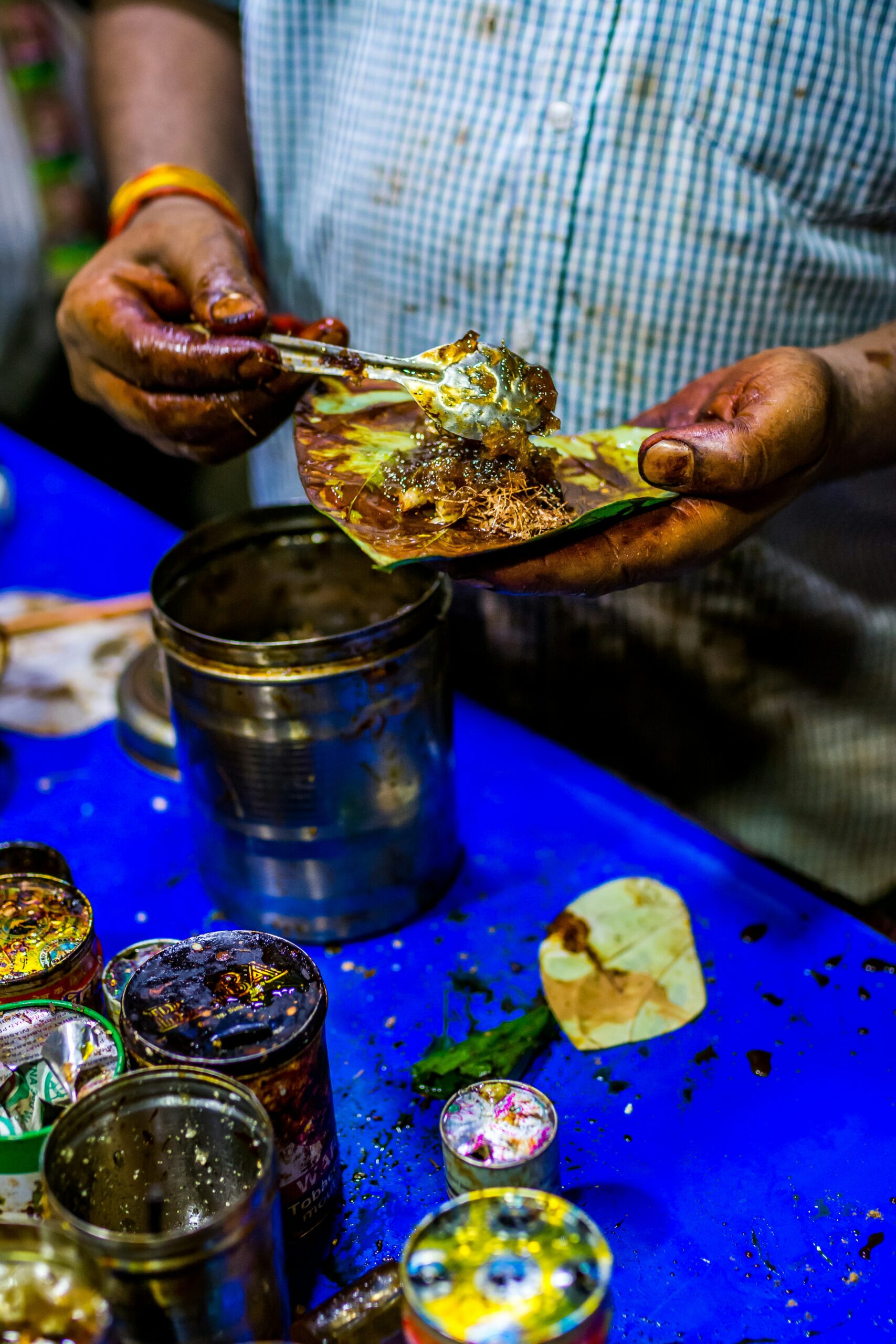
If you’ve ever stood by a roadside stall with steam rising off a sizzling tawa, you know street food in India is more than just a snack—it’s an experience. From morning chai to late-night momos, it’s how millions of people eat, connect, and enjoy everyday life.
But Indian Street food hasn’t always looked the way it does now. Over the decades, it’s evolved—from simple, functional bites to bold fusion dishes, Insta-worthy plating, and even digital payments. This quick journey through time shows how much has changed—and how much hasn’t.
Before the Buzz: The Origin of Indian Street Food
Back in the day—before social media and takeaway boxes—street food was all about feeding people quickly and cheaply. Vendors sold roasted chana, boiled eggs, pakoras and steaming chai near railway stations, markets and factory gates.
There were no menus or fancy setups—just a cart, a stove and a loyal crowd. Food was served in leaf bowls or newspaper wraps, eaten on the go and priced for daily wage earners. It was local, practical, and made with whatever was fresh and available. Flavors were straightforward, but the charm. Unbeatable.
Indian street food is dated back to the ancient times. Such historical literature as Ramayana and Mahabharata contain references to the making and sharing of food to the needy and travelers. While it’s hard to pin down exactly when Indian street food began, signs from the Indus Valley — grain storage, communal ovens — hint at an early culture of shared meals. Maybe that was the start.
As early as the Mauryan Empire (circa. 300 BCE), the markets of such cities as Pataliputra (modern Patna) already had their hawkers of cooked dishes. Early political treatise as Arthashastra written by Chanakya contains mention of food vendors and laws regarding sale of food suggesting that street vending was a well-known economic activity.
The influence of Mughals and Traders and their Medieval flavors
The Medieval India was enriched with a variety of flavors in the arrival of Muslim dynasties as well as foreign traders. Indian cuisine received Persian, Turkish and Central Asian influences brought by the Delhi Sultanate and subsequently the Mughal Empire. The food, such as Kebabs, Samosas, and Biryanis, that used to be culinary delicacies of royalties were served in the local markets and roads by the street vendors that addressed the needs of common people.
At coastal areas, new ingredients and styles were introduced through the sea trade. Portuguese brought potatoes, tomatoes, and chilies, and the Chinese traders did so to the northeast of India. Such exchanges led to the development of street food in the region, as in Goa, Hot Chouricos (sausages) and Vindaloo were created, and in Bengal Kathi Roll and Jhal Muri became popular.
Religious festivals and gatherings were to be found on the street vendors since the food they provided was fast, cheap and could be eaten readily. Temple neighborhoods and markets were a hotspot of vendors and this created a very distinct cross between food, religion, and community.
The British Twist on Indian Street Food
Another turning point was the British colonial era (18th to 20th century). Street food took new forms because of Western influences and Indian customs. Somewhere along the line, someone mashed up leftover veggies, added too much butter, and called it Pav Bhaji and it stuck. It’s still our go-to comfort food on a hungry evening.
Tea stalls became another landmark of the Indian street culture, as well. The Chaiwala business model of selling very strong, heavy spiced tea along with snacks such as Parle-G biscuits, Pakoras or Samosas became a daily routine to millions. Chai was a unifier of different social groups since it flattened the level of classes.
Bombay, Calcutta and Madras, urban inhabitation controlled by the British were pot melting in which various communities coexisted and shared food. Side by side, Parsi, Gujarati, Tamil, Marathi and Bengali street foods were developed and each city acquired its own identity. Calcutta was famous for its egg rolls; Mumbai was famous with Vada pav and Chennai with Idli-dosa stalls.
The Rise of Street Food in India after Independence
Following independence in 1947, industrialization and quick expansion of urban population led to a drastic increase in the economy of street food. The mass movement of migrants to the cities resulted in boom demand in fast and affordable food. This led to formalized informal food sector.
In the 1970s and 80s, street food entrepreneurs flourished. Dhabas along highways, pushcarts in towns, and hawkers outside schools became essential food providers. The vendors also differentiated in their specialty and chaat in Delhi, Misal Pav in Pune, and Bhel Puri on the Mumbai beaches became specialties.
Taste always prevailed over hygiene. The food was fresh, spicy, cheap and filling. Even its flavor depended on regional taste; Pani puri (also called GolGappa or Phuchka) tasted different across states and introduced local spices and tastes.
With cities swelling and office hours stretching, who had time to cook? The middle class leaned into street food — it was quick, flavorful, and everywhere. You’d find vendors outside railway stations, college gates, and government offices feeding the nation, one samosa at a time. To most people it was not a meal but a day-to-day ritual, a relief and a community meeting place.
The Golden Era of Taste: From Pav Bhaji to Chaat Craze in 80s-90s
The 80s and 90s were when Indian street food really found its swagger. Pav bhaji sizzled on giant tawas in Mumbai, spicy chaats took over Delhi corners, and Kolkata’s kathi rolls wrapped up lunch on the go.
Carts became landmarks. Vendors became local legends. Recipes got bolder—more butter, more spice, and more variety. Hygiene still wasn’t a big concern, but no one cared as long as the food hit the spot. It was messy, flavorful, and completely addictive.
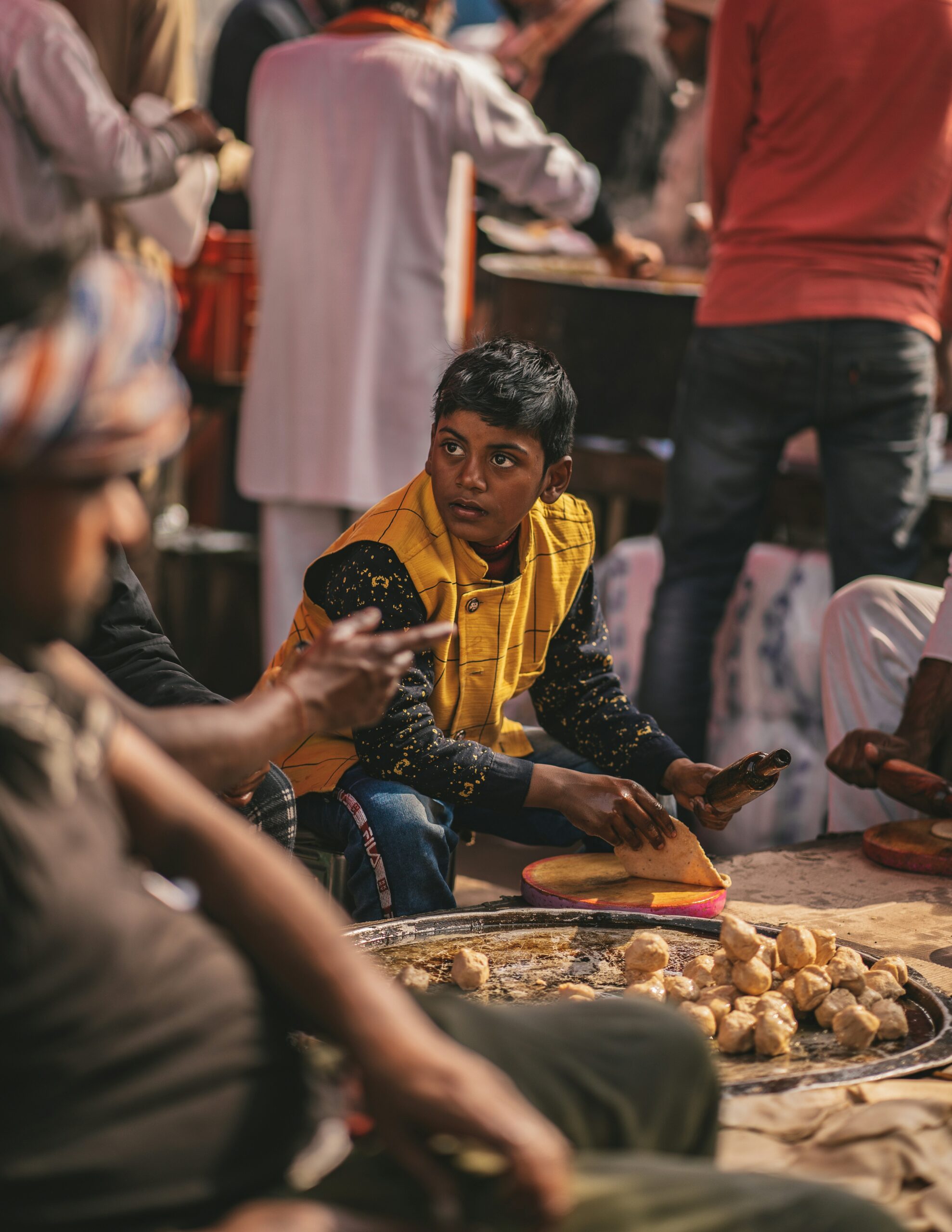
The Indo-Chinese Wave: Late 90s to 2000s
By the late 90s, Indian street food got a new kick—with soy sauce, vinegar, and a lot of red chili paste. Enter Indo-Chinese: chow mein, Manchurian, and fried rice sizzling on hot woks right next to traditional snacks.
These dishes weren’t authentic Chinese—but that didn’t matter. They were fast, fiery, and became college-campus favorites. Scooped into paper plates or wrapped in foil, they were quick, cheap, and just spicy enough to crave again. From that point on, street food wasn’t just traditional—it was trending.
The Fusion Era: 2010s and Beyond
In the 2010s, street food went bold. Momos turned cheesy, dosas wrapped like tacos, and Nutella showed up in parathas where no one expected it. Food trucks rolled in, cameras came out, and suddenly every stall wanted to be on social media. Vendors got creative with flavors, combos, and names because everyone wanted something fun, fast, and photo-worthy.
Street food went from the sidewalk to curated events, five-star pop-ups, and influencer feeds - without losing its street-smart charm.
A Taste Timeline: Must-Try Dishes from Each Era
- 1970s: Roasted peanuts, boiled chana, masala chai
- 1980s–90s: Pav bhaji, kathi rolls, samosa chaat
- 2000s: Hakka noodles, paneer frankies, Manchurian
- 2010s+: Nutella paratha, tandoori momos, cheese burst dosas
What’s Changed vs What’s Stayed Real
Over the years, a lot has changed. Street vendors now accept QR code payments, show up on food delivery apps, and design menus that are just as trendy as restaurant chains. Hygiene has improved, food trucks have gone upscale, and some stalls even have social media managers.
But beneath all that, the heart of street food hasn’t budged. The food is still cooked fresh in front of you, often by the same families who’ve been doing it for decades. The ingredients are local, the flavors are loud, and the energy is unmatched. Whether it’s served on a paper plate or packed in a takeaway box, the soul of Indian street food is still exactly where it started—right there on the roadside.
The New Era: Apps, Festivals, and a Global Stage
Today, Indian street food is everywhere—both on the roadside and in your phone. Food delivery platforms like Zomato and Swiggy have made it possible to order chaat, momos, or pav bhaji without leaving home. Even small vendors are now partnering with delivery apps, reaching customers far beyond their local neighborhoods.
In major cities, street food festivals have become annual events. From Delhi’s National Street Food Festival to pop-up markets in Bangalore and Mumbai, these gatherings celebrate old favorites and new inventions side by side. Vendors showcase everything from traditional recipes perfected over decades to Instagram-ready fusion bites like sushi dosas or chocolate momos.
Social media has given street food a global audience. A single viral video can turn a modest stall into a sensation overnight. Many vendors now proudly display QR code payment signs, accept UPI transfers, and encourage customers to share photos online.
While the tools and trends have evolved, the heart of Indian street food remains unchanged—freshly cooked food, shared in public, that connects people across backgrounds. Whether you eat it on a plastic stool by the roadside or have it delivered to your doorstep, it’s still about simple joy, big flavor, and a sense of belonging.
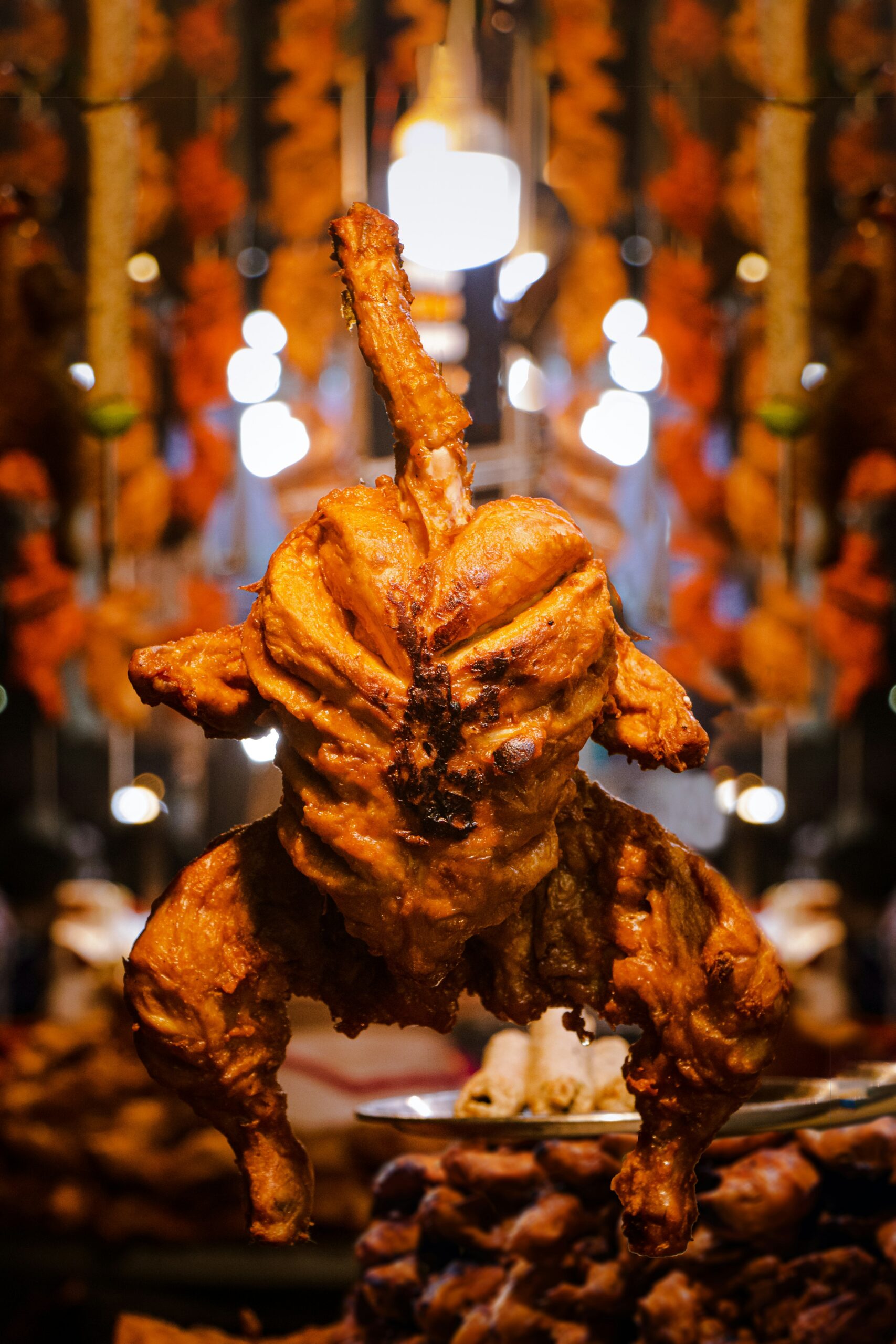
Why It Endures: The Emotional Connection to Street Food
Street food is more than a bite—it’s a memory. It’s skipping school for samosas, standing in the rain for bhutta, or sharing golgappas with friends after college. These aren’t just snacks. They’re part of our personal timelines.
Even in a world of delivery apps and designer cafes, we still crave that roadside taste. Because street food isn’t just about hunger—it’s about feeling connected, grounded, and a little nostalgic.
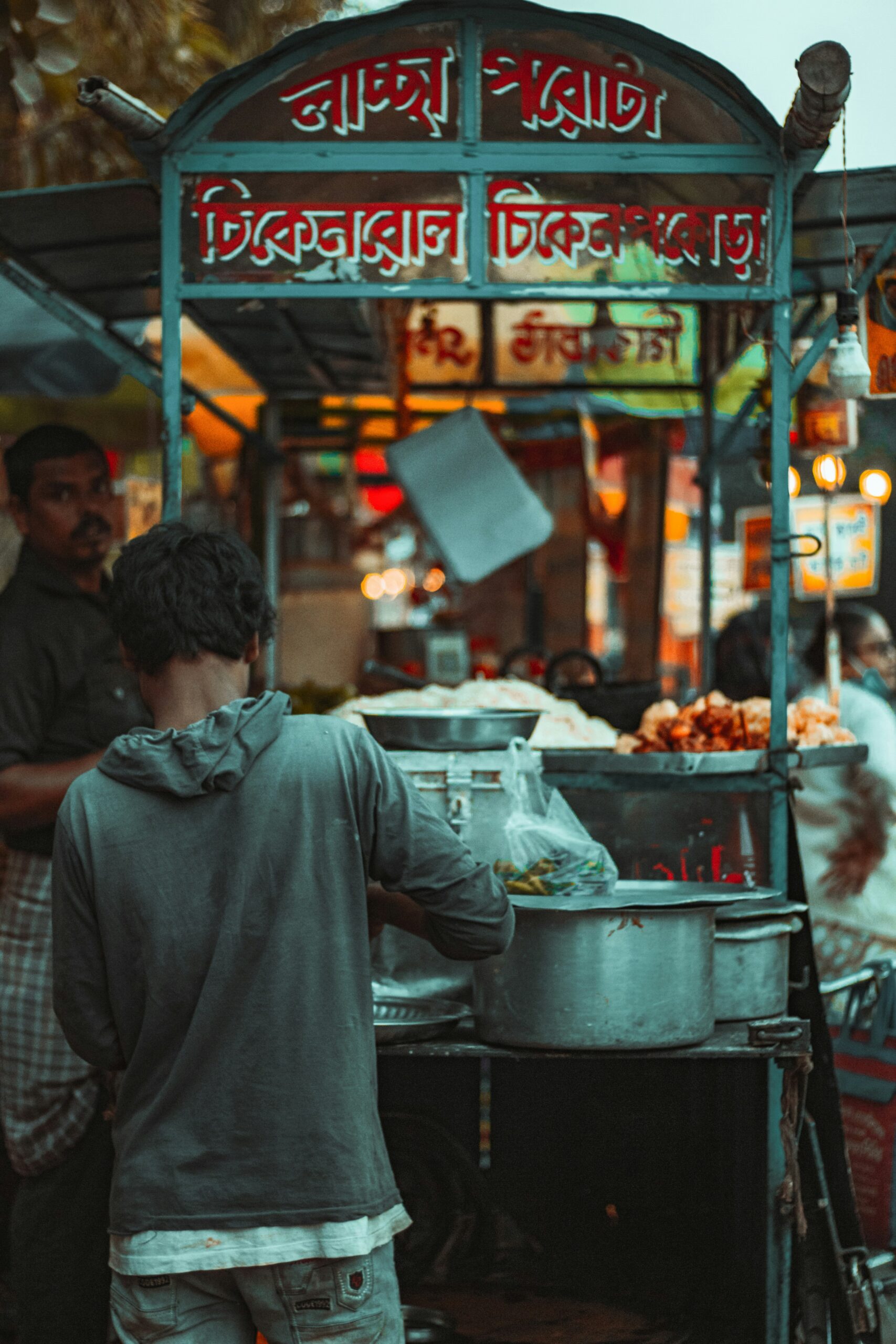
Quick Tip for Travelers
If you’re visiting India and want to try street food safely, look for stalls with a steady line of locals—it usually means the food is fresh and trustworthy. When in doubt, start with something hot off the grill or fryer.
In cities like Mumbai, certified street‑food zones and organized markets now meet hygiene standards, making exploration easier.
Heads-up: Travelers’ diarrhea affects up to 35–70% of tourists in South Asia during a two-week stay . And in 2024, India recorded over 1,000 outbreaks of acute diarrheal disease, with more than 300 food‑poisoning events—the highest since 2009 (Source). Stick to cooked, steaming-hot foods and bottled or fresh made drinks to stay safe.
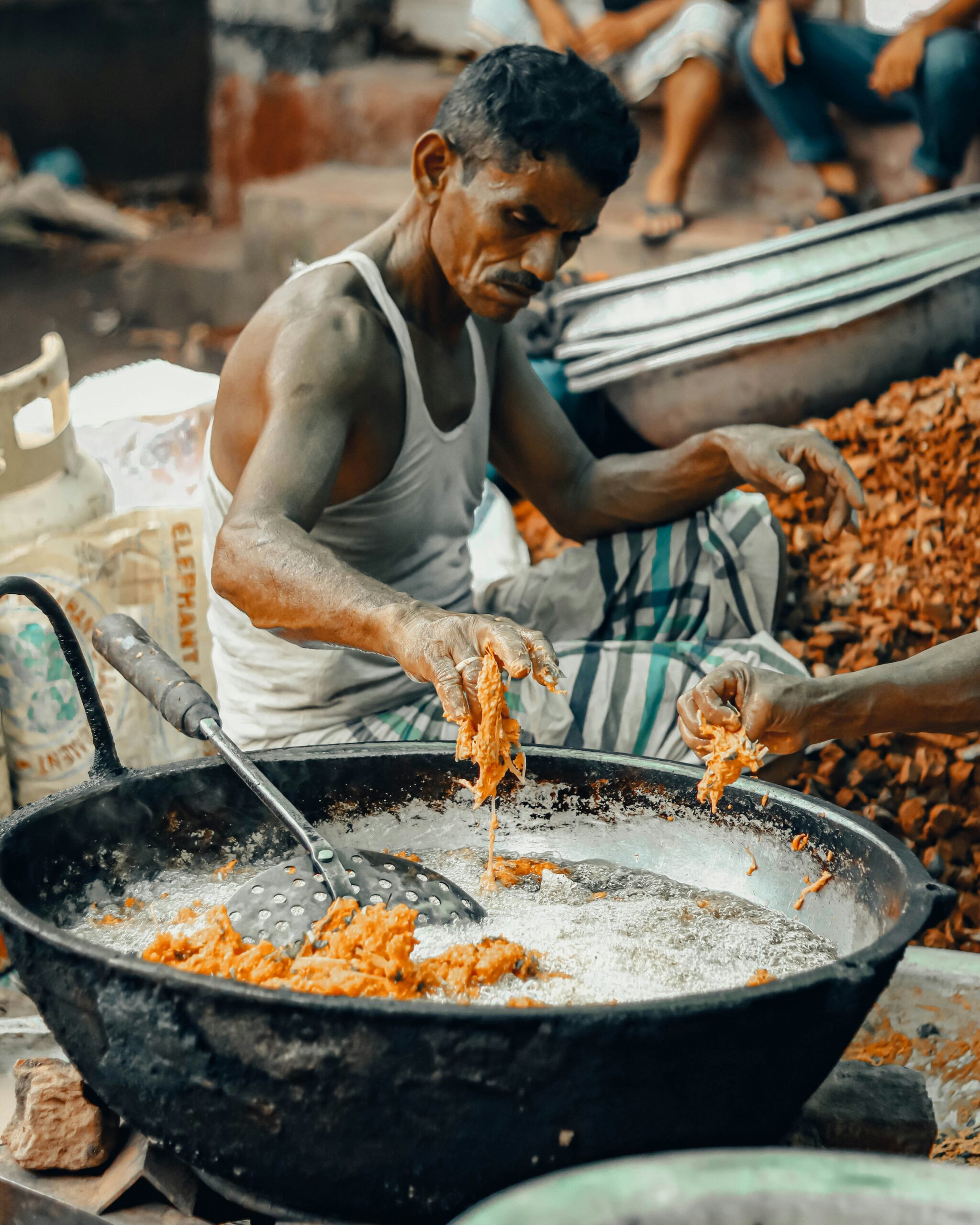
Final Bite: Still India’s Favorite Kitchen
From handcarts and leaf bowls to food trucks and Instagram reels, Indian street food has come a long way - but it’s never lost its charm. It continues to feed millions every day, not just with flavor, but with familiarity, energy and emotion.
Many street vendors have spent decades perfecting a single dish, often passing down the same recipe through generations. It’s not uncommon to find a stall that has been serving the same chaat, roll or bhaji for 30 or 40 years - each batch tasting exactly the way regulars remember it. That kind of dedication and know-how is a big reason why street food feels so special.
Trends will come and go, but the street remains India’s most beloved kitchen - open to all, full of stories and always ready to serve something unforgettable.

Learn More About Indian Street Food
- Intentional Detours – 102 Incredible Indian Street Food Dishes
A detailed overview of Indian Street food dishes.
Read on Intentional Detours - Piping Pot Curry – 23 Must Try Indian Street Foods
A short engaging article highlighting the 23 Indian Street food dishes that must try.
Read on Piping Pot Curry



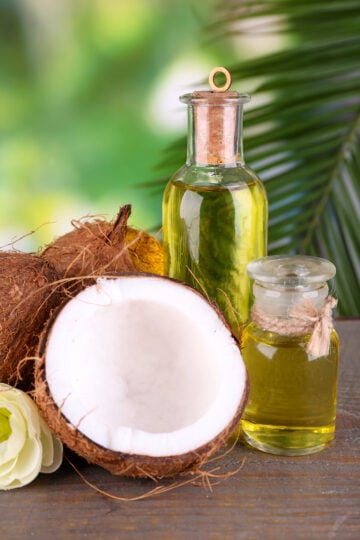
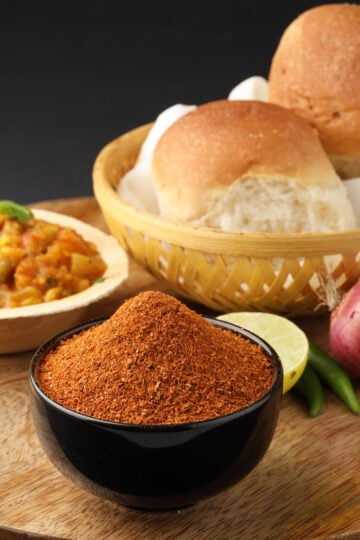
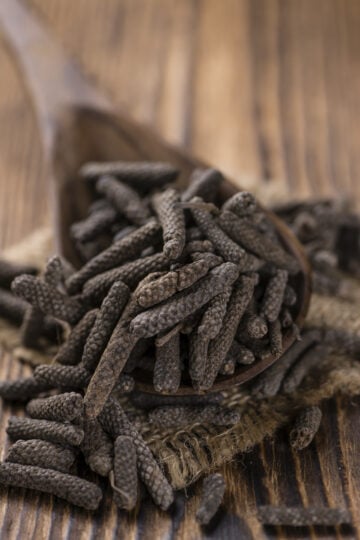
Have a question or something to share? Leave a comment below!